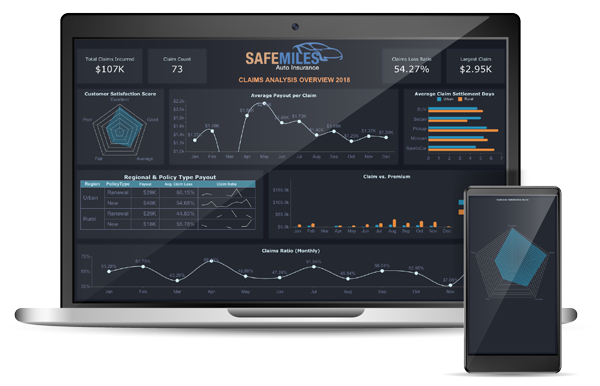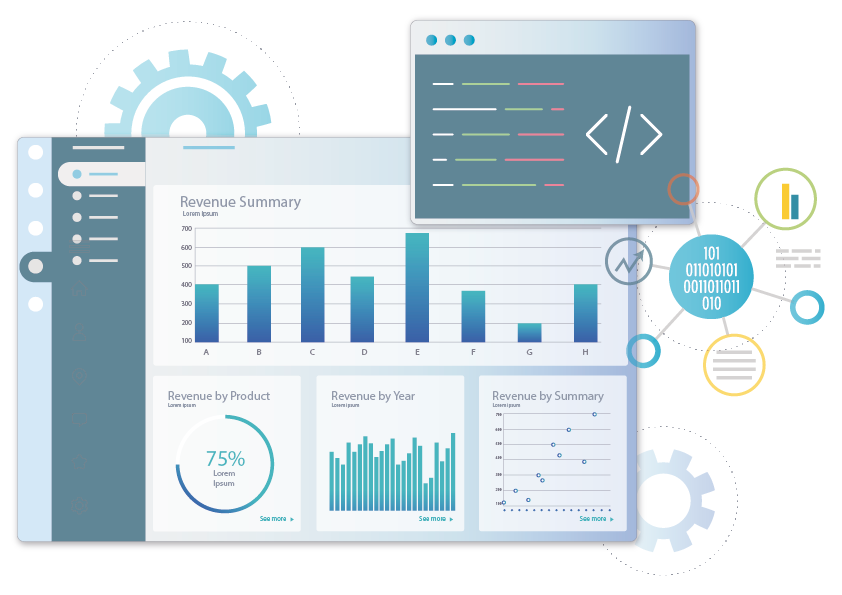Remote work is here to stay.
Gartner predicts that even in the post-pandemic era, nearly half (48 percent) of all employees will still do some degree of remote work, whether it’s entirely work-from-home (WFH) or a hybrid model that blends in-office and WFH.
The shift to remote work may come at a cost, however. According to a survey conducted two years into the pandemic, more than one-third (36 percent) of workers say their biggest frustration with remote work is ‘feeling disconnected from colleagues.’ In the wake of The Great Resignation (which saw a record 47.8 million U.S. workers quit their jobs in 2021), this worrisome sentiment can’t be ignored by employers who are already struggling to hire and retain talent.
Throughout the pandemic, business intelligence (BI) technology has rapidly evolved to tackle feelings of fragmentation and isolation among remote workers. Here’s are a few ways BI helps people who work from home stay connected:
1. BI from anywhere
2. User friendly
3. Better collaboration
BI from anywhere
BI tools empower workers to gain valuable insights from analytics technology so they can make data-based business decisions in a timely, relevant manner. Although BI software has been around for decades, the pandemic shift to remote work has boosted the demand for technology that enables BI beyond the boundaries of an office environment.
Many IT vendors now ensure that their BI technology is viewable and accessible on mobile devices. Through mobile BI, remote workers can access and enjoy the same user experience as their colleagues in the office, even on much smaller screens!
Cloud is also making BI more accessible to remote workers. Thanks to SaaS-based BI apps, WFH employees can access the same BI data and features regardless of their location, mobile device, or operating system. This shared, seamless BI experience fosters a sense of cohesion among both in-person and remote employees.
User friendly
Many BI features are making it easier for workers to use and understand analytics, including:
- graphics
- dashboards
- visualization
- storytelling
They’re part of a trend called self-service BI, which allows workers to harness the power of BI on their own, without requiring the expertise or intervention of IT managers or data experts. Self-service BI can be extremely helpful for WFH employees, who can’t seek analytics assistance by walking over to the desk of an IT person at the office.
For example, with self-service BI, a WFH employee can confidently create ad-hoc reports and dashboards, despite their technical knowledge. Many self-service BI tools have basic and advanced reporting modes available, as well as drag-and-drop controls that are familiar to many users.
Through its intuitive, user-friendly design interface, self-service BI also democratizes data, breaking down data silos between:
- managers and employees
- business units and the IT department
Most importantly, self-service BI helps more staff contribute to the process of making informed business decisions – even those who work from home.
Better collaboration
When talking about self-service BI, better collaboration is an organic and somewhat of a “bonus” outcome that naturally happens. Self-service tools provide actionable insights, but they also foster collaboration and create discussions among different teams within your organization. These discussions are valuable because, without self-service tools, they might not happen. Additionally, it is important to share dashboards and reports with teams and project members on an organizational level, so everyone can access the same data they need to make a decision.
Collaboration enables teams to share thoughts and ideas and allows team members to become more invested and involved in the projects they are working on. They can now see how their contribution impacts the organization at a higher level. This can lead to a stronger team, which is vital for the success and longevity of any business. Also, problems are solved quicker and easier when more and different team members can give input and express their points of view.
A richer, more collaborative BI experience helps remote workers feel included, less isolated, and more engaged.
Conclusion
Choosing the right business intelligence solution is an important decision. Add in the need to now accommodate WFH employees, and this decision is even bigger and more important. Luckily, business intelligence solutions have adapted and evolved to support a WFH workforce. By choosing a self-service BI platform, you're ensuring WFH employees have the ability to create the dashboards and reports they need to do their job and stay connected to other employees.






























